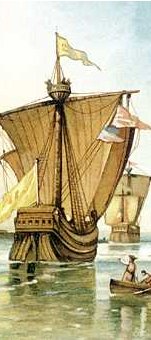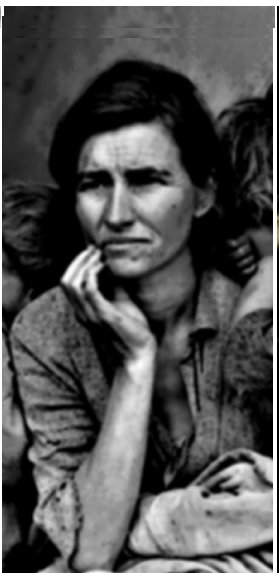Extermination of the ¡§Savages¡¨ David Yoon
William B. Secrest was born in Fresno,
California, in March, 1930. He
served in the Marine Corps after graduating high school and fought during the
Korean War. After returning, he attained a BA in education. When he was young,
he compared the western movies and what actually did happened in the west,
showing the interest of history at a young age. His other books are I Buried
Hickok, Lawmen & Desperadoes, and Dangerous Trails.
The Native Americans were
forcefully removed and exterminated. During the years after the Gold Rush,
there were constant disputes between the Indians and the settlers. They first
lived peacefully, but with the increasing number of migrants, settlers and
Indians became hostile toward each other. American settlers pushed off the
Indians with the belief that ¡§whites and Indians must be kept separate if there
was to be peace.¡¨1 Soon, the once numerous Indians, due to disease
and violence, became close to extinction. When the Great Spirit Died, by
William B. Secrest, reveals the tragedy and the sufferings the Indians went
through during their period of suppression.
From
the start, Indians were mistreated. Indians were thought to be ¡§savages¡¨ and
were ¡§bad.¡¨ Before the Europeans came to the America,
the California Indians lived in peace, and warfare was only for ¡§revenge and
seldom for plunder or distinction.¡¨2 The Spanish reached San
Diego in 1542, and established the first mission in
1769. Missions, established with good intentions, were hell to the Indians, and
it is recorded that all the missions ¡§agreed that deaths outnumbered births,¡¨3
due to diseases that spread across the state. After Mexico
gained independence, Captain John A. Sutter, who came over to California
in 1839, established Sutter¡¦s Fort on Sacramento
Valley. He tried to establish
friendly relationship with the Indians, but it was not possible due to people,
who were hired to help out the Indians, were killing dozens of Indians and
capturing hundreds of those that refused to work. When America
captured the fort in Mexican War, Captain John B. Montgomery, who now occupied
the Sacramento Valley,
gave the Indians right to choose their masters and employers but mandated
service from then and prohibited them from ¡§wandering about the country in idle
and dissolute manner.¡¨4 After the war, Indians were still treated
like animals. Not able to stand any more hostile treatment, the Indians rose up
against the owners, first with bare hand due to confiscated arms, then with
arrows, killing them, and hastening their own destruction. A volunteer group
was formed and chased down the Indians. In the end there was a ¡§slaughter of a
people who wished merely to be left alone.¡¨ 5 John Ross and his men
were from Oregon discovered that
their party had been attacked by Indians; they set up a volunteer group and
attacked the Indians. Glaton, an Indian killer, attacked the ferry that was
being run by the Yuma, and Indians
retaliated. After the attack, volunteer group was formed to chase down the Yuma,
but Yuma were already gone. This
expedition was first Indian war debt that California
received. There is a pattern for the Indians; it is that when they seek
revenge, they get exterminated.
During the 1849, California
gold drove Indians off from their land. To protect the Indians from the hostile
settlers, the Indian committee, government hired people to help the Indians,
prepared and made ideas, which were the basis of future Indian reservations.
James D. Savage, a prosperous trade on the Fresno River, and a very well known
man to both Indians and settlers, learned the Yosemites were preparing to
attack, Savage tried to maintain peace, but it was a failure. Troops were
gathered and the war was close. When the battles started, due to superior
weapon, the settlers were winning. Yosemite, unknown by the white men during
that time, was finally revealed when the settlers were searching for Indians on
1851. After numerous fights, the chief, Tenaya, was finally captured and ended
the war. Other parts of the state, Trinidad and Humboldt
Bay, when a dead body was found, ¡§it was automatically blamed on
Indians.¡¨6 When a new trail was formed, the Modocs became hostile
towards the settlers, attacking every opportunity they had and with constant
attacks, the settlers made a posse and to retaliate against the Modocs. They
tricked the Modocs into camping right next to them, where they had a surprise
attack; this ended the conflicts with the Modocs. In the village
of Kupa, many settlers started to
pour in. Garra, the chief of the Cupenos, finally decided to gather up all the
Indian tribes and fight against the settlers in the late 1851. Settlers were
fearful and gathered volunteers to crush down the Indians. Many tribes refused
and Garra was captured and killed; this probably was the last chance they had
of kicking out the settlers. After losing their chance with Garra, the Indians
continue to struggle, but they are not successful.
Although Indian attacks were not
successful, this still troubled many immigrants. Major Savage tried to establish
wealth in California by opening a
store on the Fresno River,
and gain control of the Indians. Lieutenant Tredwell Moore, who was in charge
of establishing a post on Camp Barbour
to protect the Indians, abused them instead. The settlers traveled through the
mountains, not knowing that Chief Tenaya was back; after Chief Tenaya killed
the settlers, the Yosemite fled into a different area.
Savage, trying to keep the peace, went around and talk to the Indians to
mitigate them. He and others also thought that military force was needed to
¡§keep in restraint, the brutal passions of a class of ruffianly white men.¡¨7
With fighting going on between the settlers and the Indians, there was no time
for peace, and many grew tired.
Shastas was one of those tribes; they were tired and were glad to accept
and join the reservation under protection. On their way, they were suddenly
attacked by other settlers, and caused the Indians to distrust the settlers
more. Henley, new superintendent after Baele, worked hard to benefit the
Indians. He looked through the land, but when he found a good one for
reservation, there were settlers who created conflicts to keep the Indians off
from a fertile land. With this, many of the Indians were being chased out and
were discouraged from coming to the reservations. In San Joaquin
valley, Indians and settlers lived in harmony, but it was falling apart due to
increasing settlers. Violence erupted; Indians were being driven off from their
land once again, and now, the Indians were becoming more hostile and distrust
the settlers.
Indians became scarce but were
still troublesome to the settlers. Achomawi, who lived along the Pit
River, lived peacefully, until the settlers threatened their
possessions. They attacked the settlers to protect themselves, but like most of
the other Indian tribes; they were being hit harder than they hit the settlers.
In the Mendocino County,
Asbills found the Eden Valley
and the Round valley and the Yuki, who are the inhabitants of this country, and
Asbills and his company drove out the Indians. Henley
tried to establish a reservation there, but with constant kidnapping of
Indians, many Indians left to the reservation and went into the mountains. Even
treaties were not working anymore because the Indians ¡§never forgot the
unfulfilled promises of the white men.¡¨8 Due to the diseases and
lack of doctors, the number of Indians left in the state was rapidly
decreasing. An officer of the U.S Revenue Service, John Ross Browne went to
investigate, and there he learned that there was corruption in the committee.
Many were selling reservation land for their own gains; due to corruption, Henley
was removed, where he joined up with Hastings.
They hired Jarboe to go out and hunt down Indians. The volunteers went around,
killing any Indian tribes they could find; it resulted in massacre. Many more
tribes were exterminated due to settlers¡¦ hostility towards the Indians. Now
Indians lost all hope and joined the reservations.
Secrest
tries to express the agony that the Indians went through to live peacefully
with the settlers. He criticizes the cruel behavior and the ¡§savagery¡¨ of the
settlers, the mistreatment towards the Indians, and the failure of the United
States government to protect the Indians.
While the government could have helped, the ¡§rejection of all eighteen treaties
by the United States Senate on June 1,¡¨9 1852, which was signed to
keep peace between the 12 tribes, that wished to go the reservation, and the
white settlers. Other treaties were broken, such as the treaty with the Modocs,
Maidu and many other tribes. Also, when the reservations were set up for the
Indians, many of the employers used the resources for their own benefit; with
these unsuccessful efforts to help the Indians, ¡§learned to distrust the white
man.¡¨10 This led the settlers to think that the Indians are
disobedient, and settlers pushed out the Indians farther into the mountains and
took away their property. Without food, the Indians had only one way to attain
them, stealing from the settlers, thus leading to more conflicts. Most of the
Indian problems ¡§originated with white men who treated Indians like dogs and
believed they should all be exterminated.¡¨11 The author, appalled by
the treatment of the migrants towards the Indians, criticizes the officials, the
country¡¦s government and their inability to help the Indians.
Although
some settlers generally wanted to keep peace with the Indians, Secrest blames
the settlers for Indian¡¦s destruction. The author sees the tragedy from the
caring settlers¡¦ or the Indians¡¦ point of view. In his writing, he shows the
mistreatment of the settlers towards the Indians, and how racist the settlers
were. Settlers describe the Indians as the ¡§most degraded, filthy miserable,
thieving set of anything living that comes under the head and rank of human
being.¡¨12 It is clear that the historiography is New Left, since the
author shows the racial, violent, and imperialist characteristic of the
settlers toward the Indians; the settlers killed, raped, stole, and abused the
Indians for their own benefits and pleasure. When peace could have been
achieved, the white settlers instead drove the Indians out due to their
greediness. The violent actions that the Americans did against the Indians
sabotaged any hope for peace, only leading to racial and imperialistic
emotions.
The
Gold Rush made people from all over the country to come to California
to get rich. With the flowing immigration, the Indians stood and watched
helplessly, and to the immigrants, Indians were just in the way of their future
and imaginative wealth. They only had one way to solve the problem and that was
through the extermination of the Indians. The book mainly talks about the
extermination of the Indians, and Jonathan Kirsch, an author of A History of
the End of the World: How the Most Controversial Book in the Bible Changed the
Course of Western Civilization and
a historian, says the book ¡§allows us to see the genocidal implications of
Manifest Destiny in the most intimate and gruesome detail.¡¨13 Kirsch
also calls this book ¡§illuminating,¡¨ and cannot stop praising the book, showing
the richness and the facts that many people were unaware of. He praises Secrest
for putting up photos and testimonials from eye witnesses, making people that
they were actually part of the whole removal. Kirsch also calls this killing
genocide, an action taken to fulfill white men¡¦s ambition and greed. Kirsch
describes the book nothing more than shocking. This book shows the other side
of the Indian; most people believed that they were the savages, when it was the
settlers who were the real savages. Then, Hubert H. Bancroft, author of many
books including Native Races of the Pacific States, states the killing
of the Indians was "brutal butchering on the part of our honest miners and
brave pioneers."14 The white settlers slaughtered the Indians
but the settlers¡¦ blood lusts seem to last forever, killing more and more.
There
are more criticisms about how the Indians were treated by the whites. John
Burch, from Campbellsville Univ. Lib., KY, emphasizes how the whites ¡§butchered
those native peoples who did not succumb to venereal diseases, tuberculosis,
diphtheria, or smallpox.¡¨15 He also uses the word ¡§genocide,¡¨ and
calls the book ¡§illuminating,¡¨ like Kirsch, showing the awakening and gain of
knowledge that he received about the destruction of the Indians.
The
book, When the Great Spirit Died, shows the cruelty and the savagery of
the white settlers; in every chapter, there are lines from newspapers and from
real people, making the readers feel like they are experiencing in first
person. Also, there are pictures of towns, settlers, Indians, and the
environment to see what it was like back in the days. He also used statistics
to convince many people how Indians were mistreated; in one night, the death
was estimated ¡§at about one hundred eighty-eight Indians,¡¨16
demonstrating how savagery the whites were. By using statistics and first-hand
experienced quotes, Secrest surely convinced and appalled many people¡¦s idea
about the Indians in California.
1849,
with the finding of gold in California, people from all over the country,
mostly from the Eastern United States, came over to mine. With this rapid
movement of people in the United States,
many of the Indians were not able to adjust to the change in environment they
faced. Easterners came with large numbers, and the Indians tried to immigration
by attacking trails. Posses were formed to ¡§punish¡¨ the Indians, which usually
lead to destruction of an Indian tribe. The main U.S government, which is located
far from California, when could
of helped the Indians with their troubles, instead ¡§enacted which made it
possible for a white man to keep an Indian as a virtual slave,¡¨17
crippling the Indians even more. With the numbers of migrants and the lack of
control from east, the situation of the California Indians worsened.
The
California Indians were different from the rest of the Indians in the country.
Due to highly diverse food, the ¡§California Indians evolved into highly
omnivorous inhabitants,¡¨18 while the other Indians across the nation
were dependent on one kind of food source, such as buffalos. Also, the
California Indians were the first to be removed, around the 1850s, while the
others were removed a decade or two later. They were also removed differently;
The California Indians were generally protected, or at least supported by the
government, while the others were removed by the government and the soldiers.
The California Indians generally were less effective against the settlers since
they had less fire power to fight. The other tribes had more time to gain the
fire power they needed; this was because when the California Indians were being
removed, California Indians did not have as much contact as the rest of the
Indian tribes had with the white settlers, thus leading them to use the weapons
they already had, bows and arrows. The actions that took place in California
reflected throughout the country because many ideas of Indian reservation
actually began in California,
such as rations and protection. The difference of California Indians and their
treatments ultimately led to a model for reservations in which Indians all over
the country had to live.
The
destruction of Indians was inevitable due to the greediness of Europeans and
the Americans. Due to epidemics and violence by 1880, ¡§Apachi, the Yahi, the
Esselen, the Chimariko, the Chunute and the Telumne were gone, exterminated,
extinct.¡¨19 Many other tribes lost most of their members, some
reducing from thousands to few hundreds in a short period of time. The Indians
resorted to murder because they were hungry, and they were killed by the
settlers due to revenge, and the tribe also attacked the white for revenge and
created a whole cycle. Revenge and hostility, those are the two words that
existed between the Indians and the white settlers in California;
the book reveals the secret and the facts that are not well known, the sad life
and death of the Indians.
1. Secrest, William. When The Great Spirit Died.
Sanger: Word Dancer Press, 2003. 261
2. Secrest, William. 4
3. Secrest, William. 8
4. Secrest, William. 15
5. Secrest, William. 32
6. Secrest, William. 113
7. Secrest, William. 174
8. Secrest, William. 263
9. Secrest, William. 169
10. Secrest, William. 78
11. Secrest, William. 314
12. Secrest, William. 303
13. Kirsch, Jonathon. "Book Review."Los
Angeles Times. March 2. 2003. R2
14. Kirsch, Jonathon. "Book Review."Los
Angeles Times. March 2. 2003. R2
15. Burch, John. LibraryJournal.com 2003 3 Jun 2008
<http://reviews.libraryjournal.com/BookDetail.aspx?isbn=1884995403>.
16. Secrest, William. 329
17. Secrest, William. 307
18. Secrest, William. 1
19. Secrest, William. 336










